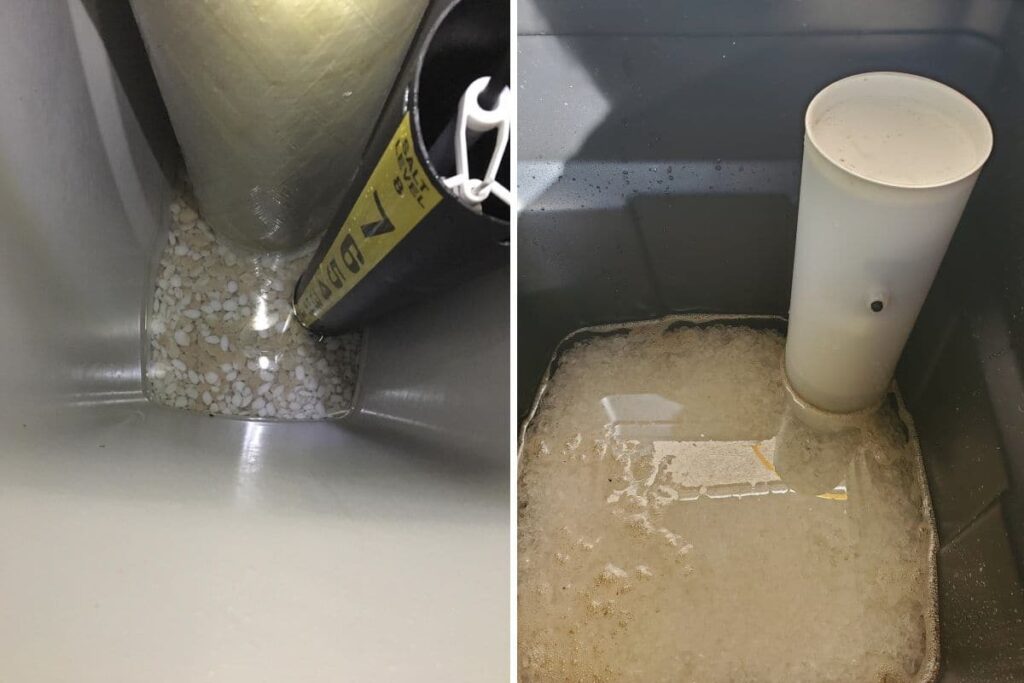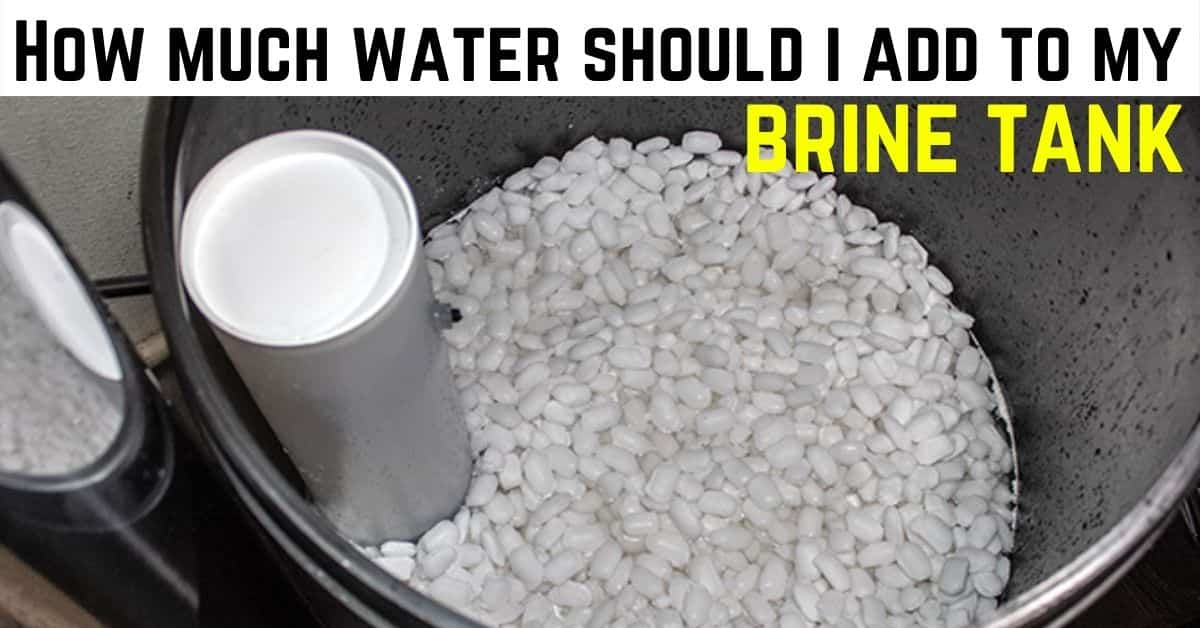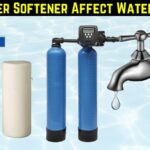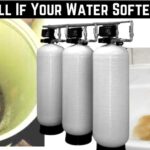If you use a water softener, you’re likely familiar with the importance of maintaining the brine tank to ensure efficient and effective water softening.
One common question that arises is How much water should I add to my water softener brine tank
Adding too little water can lead to salt bridges and other issues while adding too much water can result in the system not functioning properly.
In this article, we’ll explore how to determine the correct amount of water to add to your brine tank for optimal performance.
Keep reading for the answers!
What Is A Brine Tank?
Brine tanks are used to store a high-concentration salt water solution that is used in soft water softeners.
This highly concentrated salt water solution is also known as brine.
The wet brine tank is an essential component of a water softener, as it helps to remove hard water minerals from your home’s water supply.
Tanks are typically made from polyethylene, which is a durable plastic material.
The tank must hold at least 3-6 gallons of water and have a cover to keep the brine solution from evaporating.
How Much Water Should I Add To My Water Softener Brine Tank After Cleaning?

After cleaning it, adding the correct amount of water to your resin tank is essential.
If you do not add enough water, the salt will not dissolve properly, and your water softener regeneration cycle will not work correctly. Suppose you add too much warm water.
In that case, the salt may need more concentration, and your water softener resin will not perform as efficiently.
The correct amount of water to add to your tank after cleaning depends on the size of your media tank and the type of salt you are using.
If you have a standard 32-gallon tank, you must add about 40 pounds of salt. You will need to add more salt if you use a larger tank.
If you use a smaller tank, you must add less salt. Ensuring that your salt is correct for your water softener is also essential.
Two types of salt can be used in a water softener’s brine tank: solar salt and evaporated salt.
If you are still determining the correct amount of water or salt to add to your tank, please consult the manufacturer of your water softener.
How Do I Adjust The Water Level In My Salt Tank?
If your water level is too high or low in your tank, it can affect the performance of your water softener resin tank.
To adjust the hardness level, first, locate the float assembly. It is a plastic piece connected to the tank lid with a small rod extending into it.
There is usually a clip or screw that secures the float assembly to the top.
Once you have located it, adjust the correct water level by moving the float up or down.
To raise the water level, move the float up. To lower the incoming water level, move the float down.
Check the manufacturer’s instructions for your specific model before making any adjustments.
How Much Salt Do You Put In A Softener?
It is a question that we get asked a lot, and it depends on the specific water softener manuals you have.
Some require more bags of salt than others, so it’s essential to read the instructions that come with your unit. You can follow these general guidelines.
For most water softener manuals, you’ll want to use between 1 and 2 pounds of salt per gallon of water quality.
So, if you have a 50-gallon unit, you use between 50 and 100 pounds of salt. However, starting on the low end is always best, and increasing the amount is needed.
If your water softener needs fixing as well as it should, one of the first things you should check is the salt level.
If it’s low, add more pieces of salt pellets until it reaches the proper level.
How to Maintain a Water Softener Brine Tank?
Maintaining your electric water softener is essential to keep it working correctly. Here are some tips:
- Check the correct salt (sodium chloride) level in the brine tank float cleaning regularly. It should be between 1/3 and 2/3 full.
- The water softener resin will only work correctly if the encrusted salt level gets raised. It may also damage the unit.
- Suppose the salt liquid level gets too high. In that case, it can cause the water softener to work less efficiently and use more lbs of the salt platform than necessary.
- Clean the water in the brine tank every few months to prevent the build-up of salt and other minerals.
- If you notice any clogs in the separate brine tank, please remove them immediately.
- Inspect the brine tank operating problems for any cracks or leaks. If you find any, please replace the tank as soon as possible.
- Always keep the plastic tank lid with salt closed to prevent contamination.
Following these simple tips ensures that your dry water softener brine tank will last many years.
How Often Do You Need to Clean A Water Softener Brine Tank?
Keeping your inadequate water softener regeneration process clean is essential to maintaining the quality of your home’s water.
Depending on the size of your tank and the hardness of your water, you may need to clean it as often as once a month or as seldom as once every few months.
The best way to clean a water softener brine tank is to use vinegar and water solution. Mix one vinegar to four parts of water, and pour the solution into the tank.
Let it soak for an hour, then flush the tank with fresh water.
You may need to clean your tank more often if you have hard water. If you have a lot of sediment in your tank, you may also need to clean it more often.
You can tell if you need to clean your tank if the water level in the tank is higher than usual or if the salt level is low.
Please contact your local water treatment professional if you have any questions about how often you should clean your performance for the water softener brine tank or if you need help.
How to Tell If Your Softener Is Not Working Properly?
While most water softener maintenance will last for many years without any problems, there are a few signs you can watch for that will indicate when your water softener salt dosing is not working correctly.
Suppose you notice any of the following problems. In that case, it’s a good idea to check your water softener performance and make sure that it is still functioning correctly:
– You see staining on fixtures or appliances:
It can signify that the water softener operating cycle is not removing all of the minerals from the water. If you notice staining, it’s a good idea to have the water softener work serviced.
– The water pressure in your home is low:
Several things can cause it, but if you suspect the water softener units are to blame, it’s a good idea to check it out.
– You see build-up on fixtures or appliances:
This is another sign that the softener is not removing all the minerals from the water. Build-up can be unsightly and can also cause plumbing problems.
If you notice build-up, having the softener serviced is a good idea.
If you notice any of these problems, don’t hesitate to contact a professional to have your softener checked out. With proper care and maintenance, your softener should last for many years.
Why Your Softener Needs A Tank?
A softener uses an ion exchange process to remove minerals from water. This process exchanges the hard minerals in your water for soft minerals.
The result is much easier water on your skin, hair, and clothes and won’t leave spots or streaks.
To exchange the minerals, the softener tank needs a medium that it can use to draw the hard minerals out of the water.
That medium is usually salt (sodium ion) kept in dry brine tanks.
The dry brine tank water levels are essential to softening, and you must always keep it full of salt mushing.
If the salt tank runs out of salt, the softener tank will stop working, and your water problems will harden again.
The general rule is adding enough salt to properly maintain a water-softening system. Hence, your media tank is always at least one-quarter full.
If you need help maintaining or keeping your resin tank full of salt, consult your water-softening system manufacturer.
This video is explaining deeply the exact water level should your softener must have and some care tips:
Conclusion
In conclusion, you know how much water to add to your brine tank; you can rest assured that your system will work correctly and efficiently!
Please contact us anytime If you have any questions or concerns. Thank you for reading…….
FAQs
Factors That Affect How Much Water You Need To Add To Your Tank?
Key factors can affect how much water you need to add to your tank. The first is the type of salt being used.
Coarse salt will require more water than solar salt or evaporated salt because there’s more space between the grains.
The second factor is the temperature of the water being added to the tank.
Colder water will dissolve salt more slowly than warmer water, so you must account for that when mixing your brine solution.
Finally, the size of your tank will also influence how much water you’ll need to add. A larger tank will require more water than a smaller one.
Tips for Adding the Right Amount of Water to Your Tank?
If you have a salt-based softener, adding the right amount of water to your tank is essential. Otherwise, your softener may not work correctly.
Here are some tips for adding water to your tank:
1. Check the level of water in your tank before adding more. You want to fill it in.
2. If you need to add water, do so slowly. Adding too much at once can cause the salt to dissolve too quickly and make a mess.
3. Make sure the water you’re adding is clean and fresh. Chlorinated water is best.
4. Avoid using hot water, which can break down the salt crystals.
5. After adding water, stir the salt to help it dissolve evenly.
How Do You Get Excess Water Out Of A Tank?
There are a few ways that you can go about getting excess water out of your tank. One way is to open the drain valve and allow the water to flow.
Another way is to use a wet/dry vacuum to suck up the excess water meter. Finally, a sponge or absorbent material can soak up the salty water.
Whichever method you choose, ensure you do not allow the brine to get too low, as this can damage your system.






